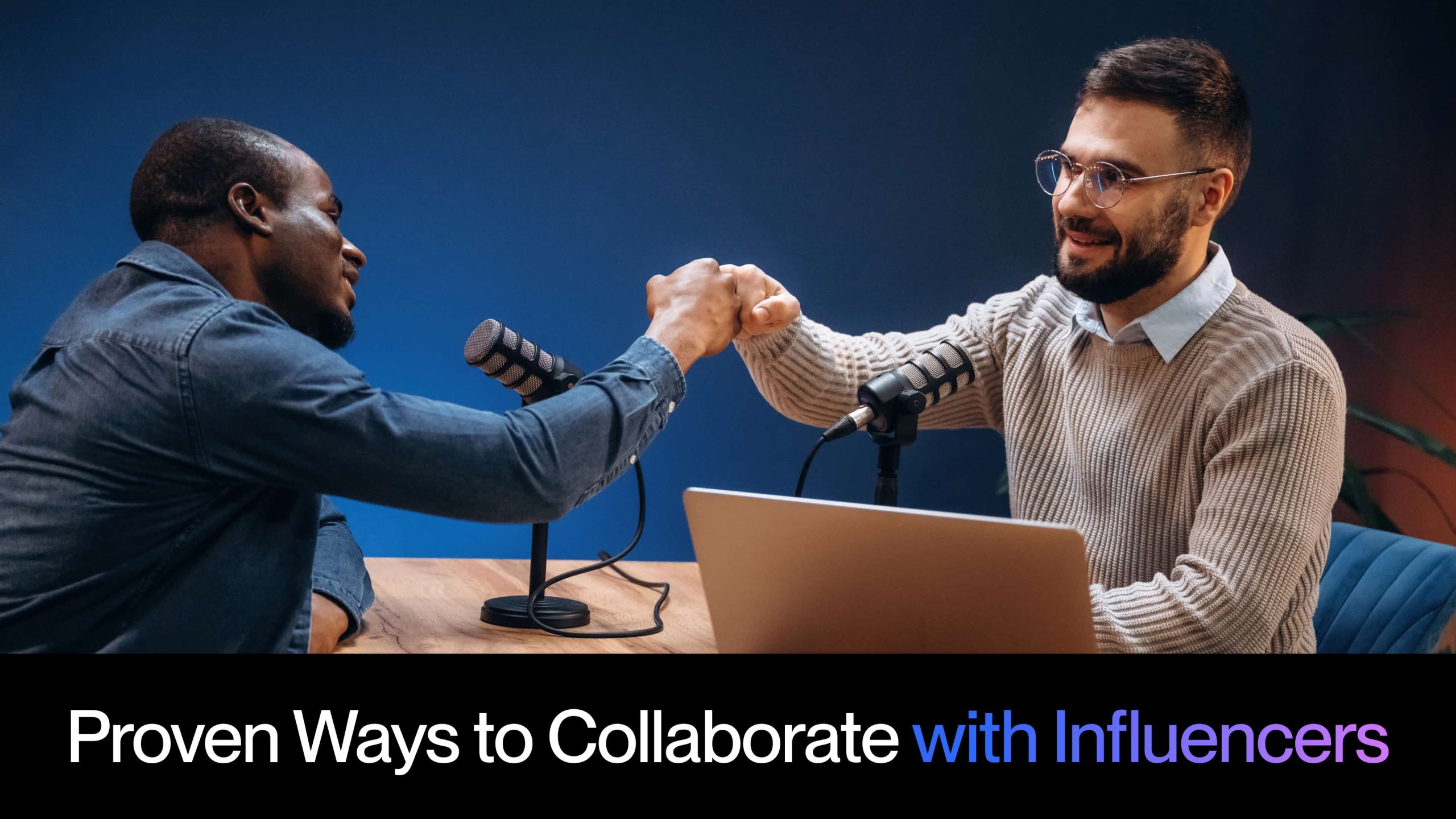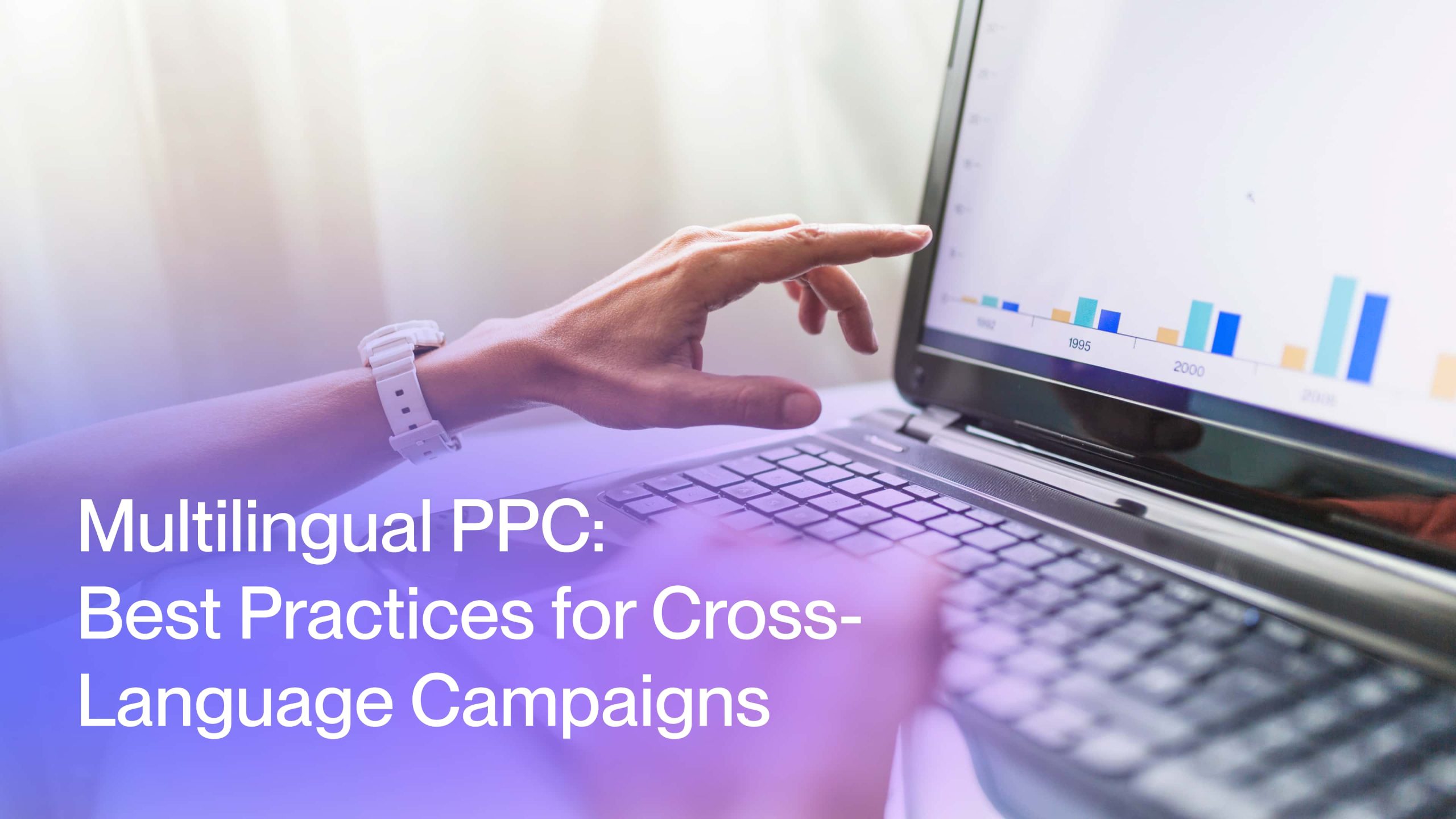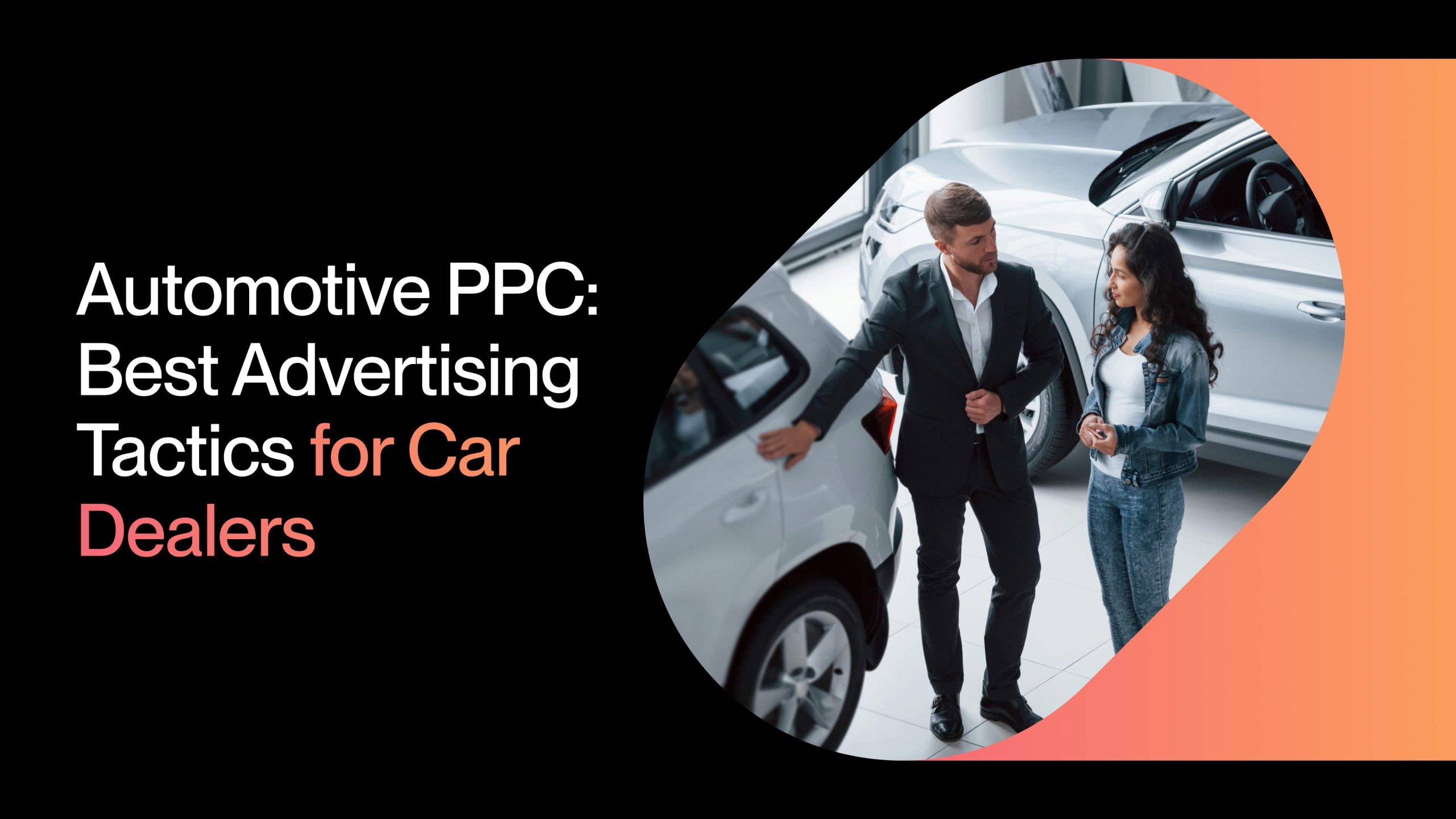Your brand just sent free products to twenty influencers. Three posted about it. One actually tagged you correctly. Zero drove measurable sales. Sound familiar?
Most brands treat influencer collaboration like throwing spaghetti at a wall—send stuff, cross fingers, hope for viral magic. But here’s what actually works: treating influencers like the media partners they are, with clear collaboration structures that benefit both sides.
In 2025, influencer marketing budgets hit $32 billion globally, but most brands still wing it. They chase follower counts instead of engagement rates. They ghost creators after one campaign. They expect professional content for the price of a gifted candle.
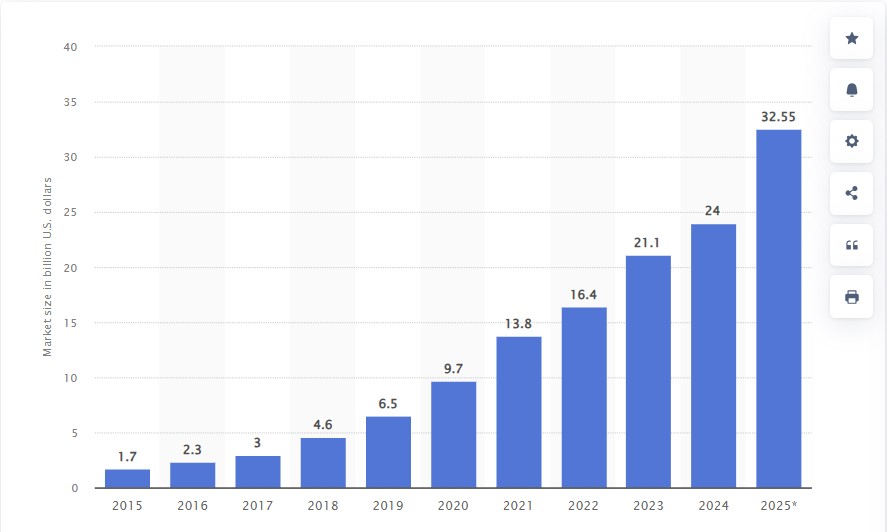
The brands winning at influencer collaboration? They understand that different goals demand different partnership models. Product seeding works for awareness. Affiliate programs drive conversions. Long-term ambassadorships build brand equity. Knowing which collaboration type matches your objective—and your budget—separates campaigns that flounder from those that scale.
We’ve spent years building influencer marketing strategies across crypto, SaaS, gaming, and consumer brands. The patterns are clear: successful influencer partnerships follow proven frameworks, not guesswork. Whether you’re launching your first campaign or refining your tenth, these eleven collaboration types give you a complete playbook for those who want to partner with influencers.
10 Proven Ways to Collaborate with Influencers
Different business goals demand different collaboration models. Some partnerships start with a simple product exchange, while others involve six-figure contracts and co-created campaigns. The key is matching your collaboration type to your objective — whether that’s initial brand awareness, direct conversions, or long-term community building.
Here’s a deep dive into how to collaborate with influencers.
1. Gifting and Product Seeding
Product seeding means sending free products to influencers with zero obligation to post. You’re hoping they’ll love what you send enough to share it with their audience — but there’s no contract, no content requirements, no guaranteed post.
Pick creators whose followers match your target customers. Ship them your product with a friendly note that basically says “we’d love your honest thoughts if you’re into it.” Then you wait and see who bites. Some creators post within days. Others ghost you completely. A few surprise you months later with a random story mention that makes the whole gamble feel worth it.
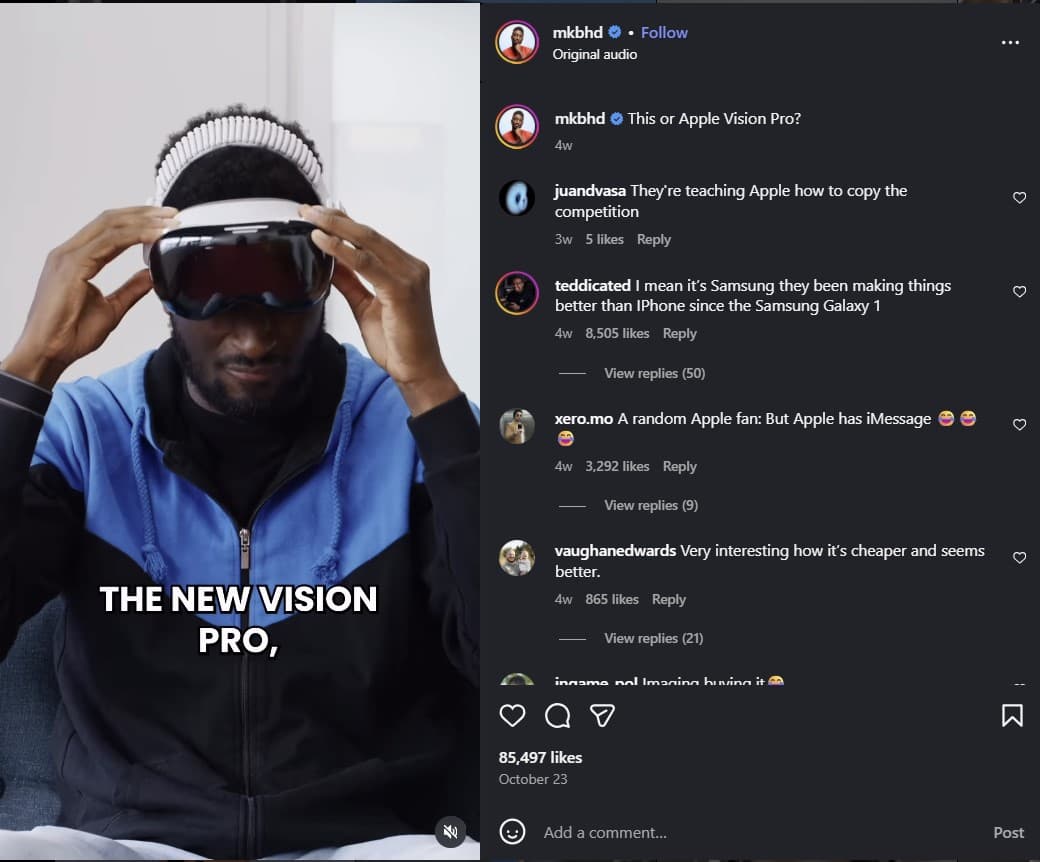
The upside? You’re spending product cost and shipping instead of campaign budgets. When creators do post, the content feels genuine — nobody’s forcing enthusiasm or reading from your approved script. Even the ones who don’t post might remember you when you’re ready for paid collaborations later. Plus you learn fast which audience types care about what you’re selling.
Effective influencer outreach starts with research, not mass-DMing generic pitches. Do your homework — check what they’ve posted recently, mention something specific about their content, explain why your product fits their vibe. Micro-influencers (10K-100K followers) convert better here than mega-creators buried in PR packages. Track who you sent to and whether they posted. Follow up once after two weeks, then move on.
Track these key metrics to measure your gifting campaign success:
| Metric | What to Track |
| Response Rate | Percentage who actually post |
| Engagement Rate | Likes, comments, shares, saves |
| Traffic & Conversions | Clicks and purchases via unique codes |
| Cost Per Post | Total spend ÷ posts generated |
“With gifting and product seeding, the response rate is usually modest — many creators accept the gift but only a smaller share actually post. When someone genuinely loves the product, the posts can feel very authentic and sometimes drive strong engagement. Overall, gifting is great for discovery and testing interest, while paid work gives structure and measurable outcomes.”
Michael M, Head of Influencer Marketing, Ninja Promo
Glossier built its cult following largely through product seeding. They sent personalized packages to beauty micro-influencers with handwritten notes and zero pressure to post. Thousands of organic unboxings and reviews followed. Those early recipients became Glossier’s loudest advocates — many eventually joined their formal ambassador program after months of unpaid raving.
2. Sponsored Content and Brand Mentions
Pay a creator to post about your brand. Set deliverables (one post, three stories, a TikTok), agree on price, sign the contract. They create the content, you get guaranteed visibility.
This is the straightforward version of influencer collaboration — no guessing if they’ll post, no crossed fingers. The creator commits to timing and messaging. You send a brief, they make the content (with your approval or creative freedom, depending on what you negotiate), and it goes live on schedule.
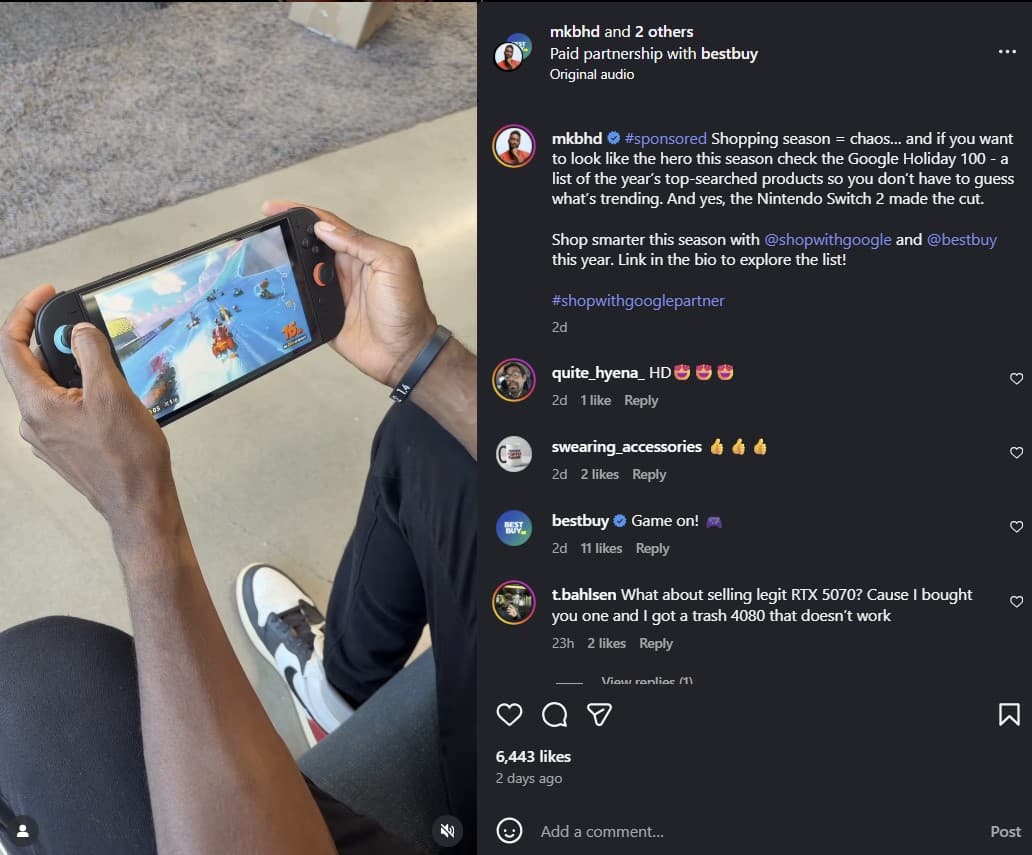
Works best for launches, flash sales, or when you need consistent messaging across multiple creators at once. Sponsored posts deliver reach and control, making them ideal for brand awareness campaigns. Just know that audiences clock sponsored posts immediately, so expect engagement to drop compared to organic content. (Still worth it if you’re chasing awareness over immediate conversions.)
Choose creators whose followers look like your customers. Give guidelines without micromanaging every caption — overly scripted posts kill engagement faster than anything. Provide assets upfront (product shots, discount codes, links) so nothing stalls the campaign.
Track these metrics to evaluate your sponsored content performance:
| Metric | What to Track |
| CPM | Cost per thousand impressions |
| Engagement Rate | Likes, comments, shares on sponsored posts |
| Click-Through Rate | Clicks on links or CTAs in posts |
| Conversions | Purchases via discount codes |
“Sponsored content works well for launches, promos, or moments when consistent messaging is important. Results are usually solid in reach and awareness since the creator is committed to posting. Overall, brands can expect reliable exposure and clear messaging, even if the impact on conversions depends on the creator’s audience and the offer.”
Michael M, Head of Influencer Marketing, Ninja Promo
Daniel Wellington built a $220 million watch brand almost entirely through sponsored Instagram posts. The company paid hundreds of micro and mid-tier influencers to post photos wearing its minimalist watches with discount codes. Rinse and repeat across thousands of creators. Simple, scalable, and it worked before the brand ever touched traditional advertising.
3. Product Reviews and Unboxings
Product reviews and unboxings are exactly what they sound like — you pay a creator to open your product on camera, test it, and tell their audience whether it’s worth buying.
Send your product to a creator in your niche (tech reviewers for gadgets, beauty YouTubers for skincare, you get the idea). They film themselves unboxing it, testing it out, and sharing their honest take. The best reviews show real use over days or weeks, not just a rushed five-minute first impression. Some creators compare your product against competitors or deep-dive into features their audience cares about most. YouTube influencer marketing thrives on these detailed product reviews that give viewers the information they need before buying.
Here’s why this works: people trust reviews because they’re watching someone who tried the thing themselves. Before dropping money on your product, viewers want to see if it solves their specific problem. Plus, review content lives forever on YouTube or TikTok — it keeps driving traffic months after the creator posts it.
Choose creators who fit your product category and whose audiences would buy what you’re selling. Give them enough time to test properly — rushed reviews feel shallow and nobody trusts them. And don’t script their opinions or demand they only highlight the good stuff. Audiences spot fake reviews instantly, and it torches your credibility.
Monitor these metrics to gauge review campaign success:
| Metric | What to Track |
| View Count | Total views on review content |
| Watch Time | How long viewers stay engaged |
| Comment Activity | Questions and discussions about the product |
| Click-Through Rate | Traffic driven to your site |
| Conversions | Sales via unique discount codes |
“Reviews perform better when the creator is genuinely curious about the product and shows real use or reactions. Clear storytelling, good pacing, and honest opinions also make the content more engaging. Overall, authenticity and a creator’s connection to their audience play the biggest role in how well a review lands.”
Michael M, Head of Influencer Marketing, Ninja Promo
Ridge Wallet built its brand almost entirely through YouTube reviews. The company sent its minimalist wallets to tech and EDC YouTubers who showed how it stacked up against traditional wallets. Those reviews racked up millions of views and turned Ridge into a $200 million business. The move that made it work? Ridge let creators give honest opinions — including criticisms — which made the positive feedback feel credible instead of paid hype.

4. Social Media Takeovers
Hand a creator your Instagram login for 24 hours and let them run your account. They post stories, go live, answer follower questions, and give your feed a fresh voice that doesn’t sound like your usual marketing team wrote it.
You give them access (or use tools that let them post without full account control — depends on how much you trust them). They create content throughout the day showing behind-the-scenes stuff, sharing their hot takes on your products, or just being themselves on your platform. Their followers tune in to watch, your followers get something different than the usual grid posts. These social media collaborations inject fresh energy into your feed while tapping into the creator’s established audience.
This plays well when you want fresh energy in your feed or access to the creator’s audience. The real-time element keeps people checking in all day. The risks? Choosing someone whose style clashes with yours, skipping guidelines on what’s off-limits, or not testing the tech before they go live. All fixable problems if you plan ahead.
Set boundaries on tone and topics before they start. Do a tech run-through so nothing crashes mid-takeover. Decide who handles DMs. Choose creators who already mesh with your brand voice — you can’t fake authenticity for 24 hours straight.
Track these metrics during and after your takeover:
| Metric | What to Track |
| Follower Growth | New followers during and after takeover |
| Story Views | Engagement on takeover stories |
| Overall Engagement | Likes, comments, shares during takeover |
| Audience Crossover | Whether creator’s audience followed you |
“Social media takeovers work well when the creator’s voice and style feel like a natural extension of the brand. They’re effective when the creator brings behind-the-scenes content, real-time interaction, or a fresh point of view that the brand normally doesn’t show. They fail when the tone feels off, the content looks too scripted, or the creator doesn’t engage with the audience.”
Michael M, Head of Influencer Marketing, Ninja Promo
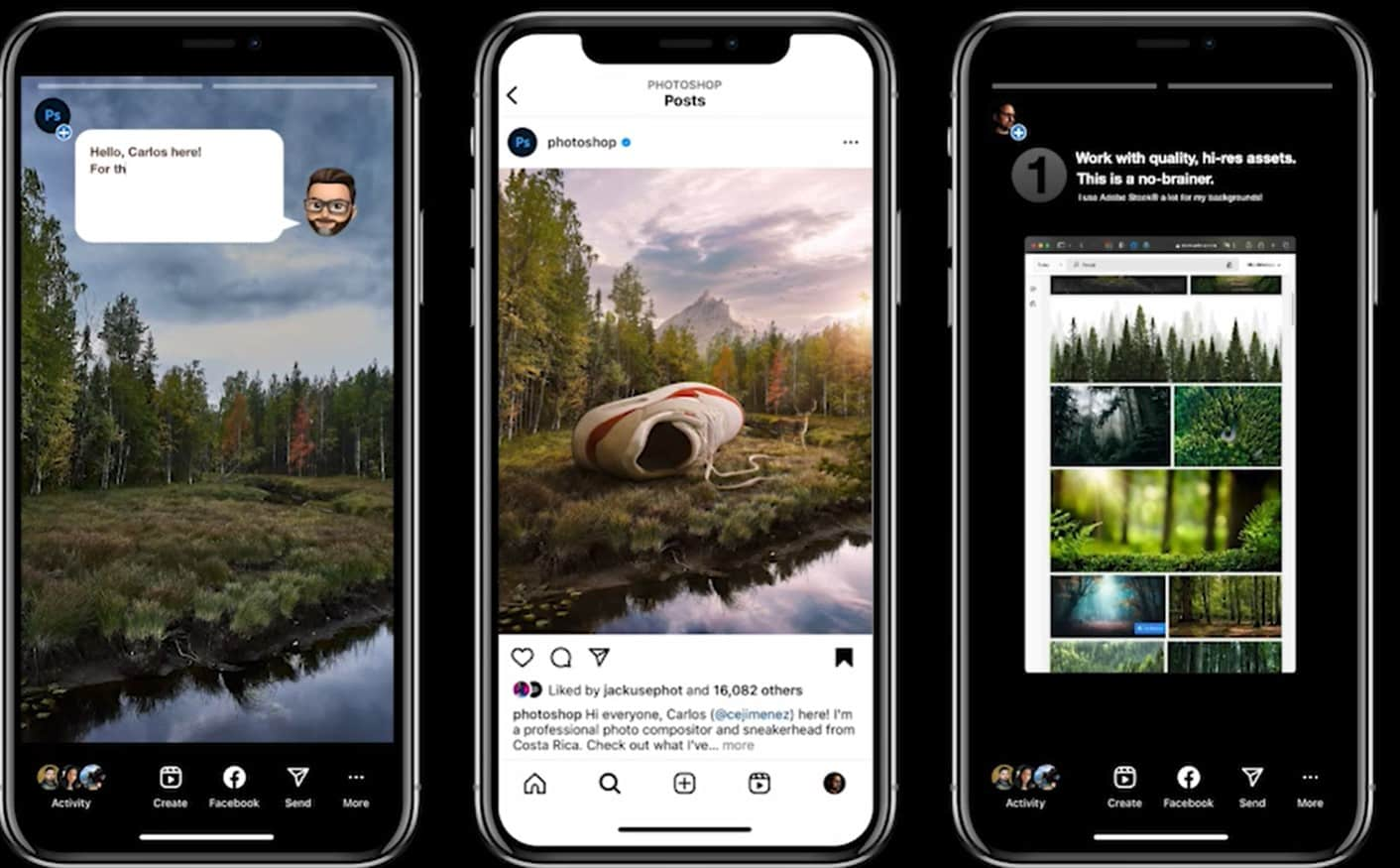
Adobe regularly invites creative professionals to take over its Instagram. Designer and illustrator Carlos Jimenez Varela ran Adobe Photoshop’s account, sharing his creative process and design work. Each takeover brings in new followers from the creator’s audience while positioning Adobe as the tool those experts use.
5. Giveaways and Contests
Partner with a creator to give away your product. Their audience enters for a chance to win, usually by following both accounts, tagging friends, or posting content with your branded hashtag.
The creator announces the giveaway with entry rules and a deadline (typically 1-2 weeks). Followers flood the comments tagging friends, your follower count jumps, engagement spikes, and you get immediate visibility around a launch or campaign. Then you pick winners and hope most of those new followers stick around. Smart influencer campaign ideas often incorporate giveaways to generate quick buzz and expand reach.
Here’s the catch: the wrong prize attracts the wrong people. Offer an iPad and you’ll get freebie hunters who vanish the moment the contest ends. Offer a product bundle your ideal customer wants? You’ll attract people who might buy from you later.
Choose prizes that your actual target customers care about — product bundles or experiences work better than cash. Structure entry requirements to benefit both accounts (mutual follows, tags that expand reach). Set clear terms and eligibility upfront so nobody claims you rigged it when their cousin doesn’t win.
Measure giveaway success with these key metrics:
| Metric | What to Track |
| Follower Growth | New followers gained during contest |
| Engagement Rate | Comments, tags, shares on giveaway posts |
| Retention Rate | Followers who stay after contest ends |
| Website Traffic | Visits during campaign period |
“For giveaways and contests, offering irrelevant or overly flashy prizes can attract the wrong participants. The prize should be meaningful but still relevant to the brand – usually a product bundle or experience rather than a high cash value. Overly expensive prizes can attract the wrong audience, while targeted prizes bring in people who are genuinely interested.”
Michael M, Head of Influencer Marketing, Ninja Promo
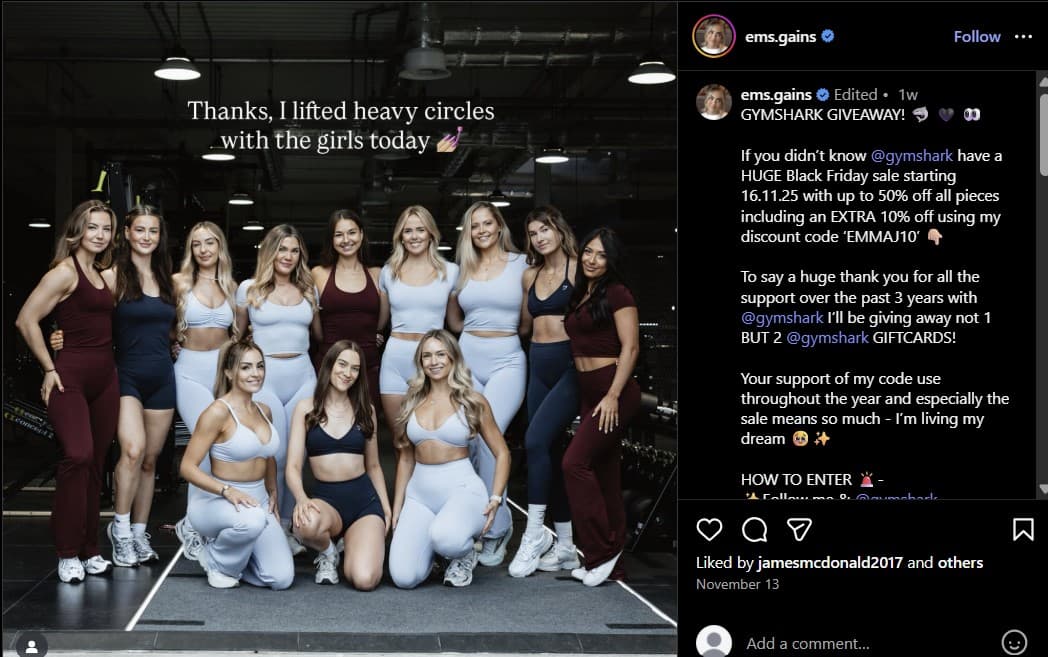
Gymshark ran a massive $250K gift card giveaway partnering with fitness influencers to promote it across social platforms. The prize attracted serious fitness enthusiasts who wanted to upgrade their workout gear, not random people chasing free money. The campaign generated millions of impressions while reinforcing Gymshark’s position in the fitness community.
6. Affiliate Marketing and Discount Codes
Affiliate marketing means creators earn commission on every sale they generate for your brand. Give them a trackable link or discount code, they promote your product, and they get paid when someone buys.
Set up creators with unique URLs or promo codes that trace sales back to them. They share these in posts, stories, bios, wherever their audience hangs out. When someone buys using that code, the creator earns a cut — typically 5-20% depending on your margins. (Higher-ticket items sometimes warrant bigger percentages to make promotion worthwhile.)
You’re only paying for conversions, not vague metrics like reach or engagement. Creators stay motivated because more sales mean more money in their pocket. No performance? No payout. Simple math that keeps everyone honest. This approach makes measuring influencer ROI straightforward — you track exactly which creators drive sales and which don’t.
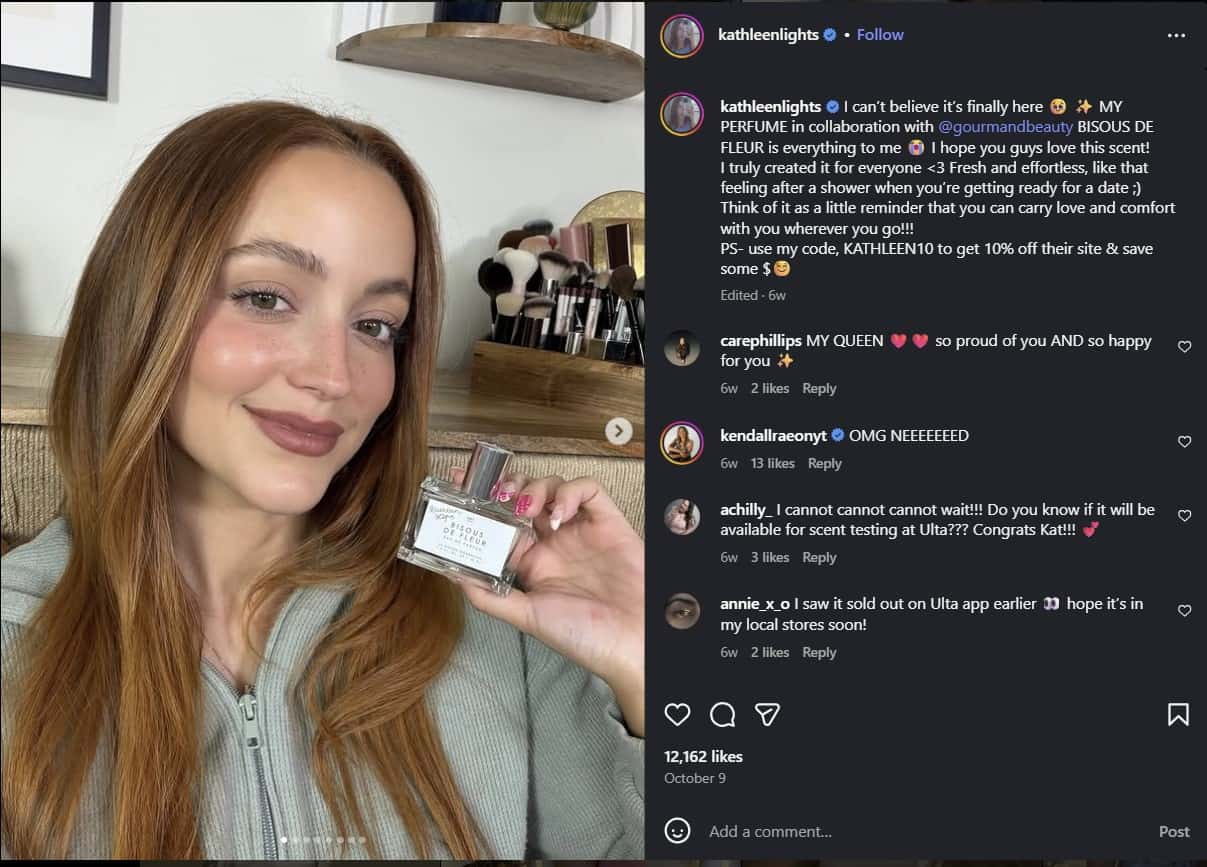
Give creators discount codes they can actually remember — nothing kills conversions like “SAVE15XYQZ2024.” Share product shots and key details but let them craft the pitch in their voice. Their audience trusts how they talk, not your marketing department’s approved copy. When you negotiate influencer contracts, spell out commission rates and payment schedules so nobody’s chasing you for answers. Set up dashboards where creators track their earnings without bugging you every week. Strong influencer performance tracking keeps both sides informed and motivated.
Track these affiliate program metrics closely:
| Metric | What to Track |
| Click-Through Rate | Clicks on affiliate links |
| Conversion Rate | Purchases from each creator’s code |
| Revenue Per Creator | Total sales attributed to each affiliate |
| Repeat Purchase Rate | Customers who buy again |
“Affiliate marketing with influencers is usually structured around unique tracking links and personal discount codes so brands can see who drove each sale. Creators get a commission for every purchase, and rates often depend on the niche and product margin. The most important tracking metrics are clicks, conversion rate, and total revenue per creator. It’s also helpful to watch repeat purchases, since that shows stronger audience trust.”
Michael M, Head of Influencer Marketing, Ninja Promo
Mejuri grew its jewelry brand past $100 million partly through affiliate partnerships with fashion influencers. The brand pays solid commission rates and lets creators style pieces however they want. That creative freedom keeps the content feeling genuine while affiliates funnel in customers who already trust their taste — keeping acquisition costs reasonable while revenue climbs.
7. Co-Created Content and Storytelling Campaigns
Co-created content means you and the creator develop the campaign together — not you handing over a brief and hoping they nail it, and not them winging it without your input. You’re building something neither of you would make alone. This brand and influencer collaboration approach produces more authentic content than traditional sponsored posts.
Start with actual conversations about campaign goals and what matters to their audience. Share your brand guidelines, they bring ideas on what’ll land with their followers. You develop concepts together, review drafts, refine messaging as you go. The creator has skin in the game instead of just collecting a check for reading your script.
This works for bigger campaigns where storytelling carries more weight than quick product plugs. Documentary-style series, branded challenges, narrative content that unfolds over weeks. The benefits of influencer marketing spike when creators feel ownership instead of just following orders.
Give clear guardrails — brand values, key messages, absolute no-go topics — then let creators figure out how to tell the story. Micromanaging every caption kills the authenticity that makes it worth the effort to collaborate. Check in at key milestones to catch issues early without breathing down their neck between drafts.
Evaluate co-created campaigns with these metrics:
| Metric | What to Track |
| Engagement Rate | Likes, comments, shares on co-created content |
| Watch Time | How long audiences engage with content |
| Comment Sentiment | Audience reactions and feedback |
| Performance vs Standard Posts | Compare to regular sponsored content |
“The best balance is usually a ‘framework approach’: outline the key points and brand tone, but let the creator decide how to present them. Trusting the creator often leads to higher engagement and audience trust. Ultimately, authentic storytelling thrives when the creator’s voice is preserved within the brand’s objectives.”
Michael M, Head of Influencer Marketing, Ninja Promo
Track engagement rates and watch time to see if people care enough to stick around. Read the comments to gauge sentiment. Compare performance against your standard sponsored posts — co-created campaigns should outperform them, otherwise you’re probably micromanaging the creative too much.
Patagonia hands creative control to climbers and activists for its environmental content. Its climbing documentary series racks up millions of views because it comes from people the audience respects, not the brand’s marketing team. The company’s values shine through without feeling like corporate propaganda.

8. Event and Webinar Collaborations
Invite a creator to speak at your event or webinar and watch their audience follow them there. That’s the collaboration — you get a credible voice on stage (or screen), they get a platform to showcase expertise, and their followers show up because they trust the creator’s judgment about what’s worth their time.
Your event registration page is collecting cobwebs. Webinar sign-ups aren’t exactly flooding in. You could fire off another reminder email that lands in the promotion tab where emails go to die, or you could bring in a creator whose audience will register the moment they announce, “I’ll be speaking at this.”
Find someone whose followers match your target attendees. When they tell their audience they’re keynoting or running a workshop or moderating a panel, registrations jump — because their endorsement carries weight, your marketing team’s LinkedIn posts never will. The creator shows up, delivers something useful, and afterward shares highlights that keep your event circulating through their feeds for weeks. Working with influencers on events combines their credibility with your platform to create value for both audiences.
This works for product launches needing buzz, conferences where empty seats look embarrassing, or educational webinars where you’re tired of presenting to seven people (three of whom are your coworkers checking email). Just pick creators who genuinely care about your topic instead of ones just collecting speaker fees. Someone with 15K engaged followers, excited about your subject, packs more value than someone with 100K phoning it in.
Give them roles where they can contribute something real — teaching sessions, panel discussions, and expertise their audience came to hear. Flying someone across the country to wave from a stage for five minutes benefits nobody.
Track these event collaboration metrics:
| Metric | What to Track |
| Registration Rate | Sign-ups from each creator’s promotion |
| Attendance Rate | Who shows up on event day |
| Post-Event Engagement | Reach of creator’s recap content |
| Follow-Up Participation | Attendance at future events |
“When selecting influencers for events or webinars, brands look for creators whose audience matches the target demographic and who have a genuine interest in the topic. Engagement quality matters more than follower count, since active, interested audiences are more likely to participate. Partnerships deliver ROI when influencers promote the event authentically, attend or speak, and drive registrations or attendance.”
Michael M, Head of Influencer Marketing, Ninja Promo
Track how many people register after each creator promotes it, who shows up on the day, and whether their post-event content resonates.
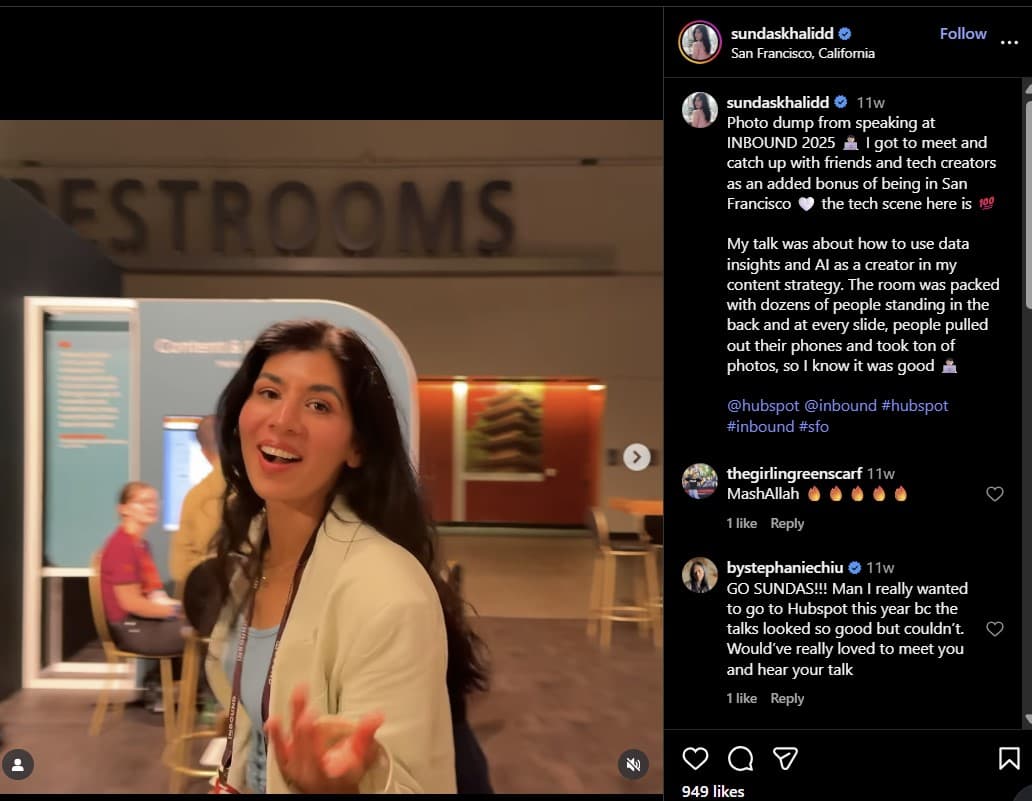
HubSpot brings marketing creators to speak at INBOUND every year. The creators promote their sessions to audiences who already trust their expertise, which fills thousands of seats that might otherwise go empty. Their post-event content — session takeaways, hallway insights, key moments — keeps INBOUND visible in feeds for months until the next conference.
9. Long-Term Brand Ambassadorships
Sign a creator to represent your brand for 6-12 months instead of one sponsored post. They integrate your products into their regular content, their audience starts associating them with your brand, and you get consistent visibility without negotiating new deals every month.
The creator commits to posting about your brand regularly — maybe weekly, maybe monthly, depending on your agreement. You pay them a retainer or per-post rate plus performance bonuses. They become the face of your brand in their niche. Over time, their repeated mentions build more trust than any one-off campaign could. Building long-term partnerships with creators delivers better ROI than one-off campaigns because audiences see authentic, sustained product use.
Works when you want staying power in a specific community. Single sponsored posts vanish from feeds in hours. A creator mentioning your brand authentically for months? Their audience starts seeing you as part of that creator’s ecosystem. The key difference in brand ambassador vs influencer relationships is that commitment and consistency. Effective influencer relationship management means staying connected with ambassadors, providing them with new products, and supporting their content throughout the partnership.
Pick creators who already use your products without you asking. Faking enthusiasm for a year fails spectacularly. Build in performance bonuses tied to engagement or sales to keep both sides invested. Give them creative freedom while setting clear monthly expectations.
Monitor brand ambassador programs success with these metrics:
| Metric | What to Track |
| Content Consistency | Quality and frequency over time |
| Audience Sentiment | How followers respond to partnership |
| Sales Attribution | Revenue from ambassador’s code |
| Engagement Trends | Whether engagement holds or declines |
“A long-term brand ambassadorship succeeds when the influencer genuinely believes in the brand and can integrate it naturally into their content over time. Consistency and authenticity are key — audiences notice if the promotion feels forced or repetitive. Ambassadors who provide feedback, create varied content, and engage with the community add more value than those who only post on schedule.”
Michael M, Head of Influencer Marketing, Ninja Promo
How can you tell if it’s working? Watch content quality over time, audience sentiment, sales from their code, and whether their engagement holds steady or tanks.
GoPro handed cameras to athletes and adventurers willing to become brand ambassadors and strap them to their helmets while doing ridiculous things. Surfers, snowboarders, cliff divers — all filming their runs with GoPro. Suddenly, every sick jump or wave barrel came with a glimpse of that little camera. People saw pros using it for their actual sports (not just for sponsored posts), and GoPro became the default action sports camera without needing to explain why.
10. UGC Campaigns and Community Engagement
UGC campaigns turn your customers into your content team. You give them a hashtag or challenge, they post their takes on your product, and you feature the best ones on your channels. This influencer-generated content approach scales authentic testimonials without sponsoring every post.
Launch a contest or creative prompt around your brand. People share how they use your product with your branded hashtag. You spotlight the winners on your main feed, in ads, or on your website. The incentive isn’t money — it’s getting noticed by a brand they’re already fans of, which matters more than you’d think. TikTok influencer campaigns often leverage UGC challenges to go viral and generate massive participation.
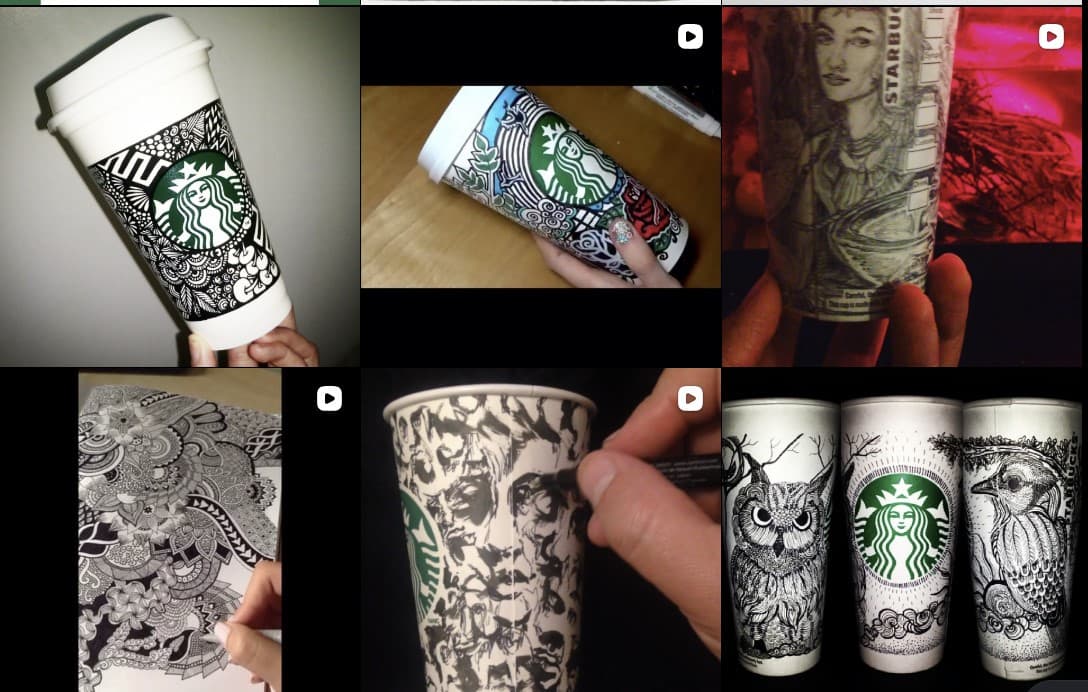
This scales authentic content without paying for every post. Real customers using your stuff beats polished brand photography because audiences trust other people more than they trust you. Knowing the types of social media influencers helps you spot which creators will hype your campaign to their communities. Just watch for fake influencers trying to game your hashtag with purchased engagement.
Keep participation simple. Memorable hashtags, clear rules, prompts that spark creativity without confusing people. Feature participants prominently so others see the recognition is real, and engage with their posts instead of just reposting them into the void.
Track UGC campaign performance with these metrics:
| Metric | What to Track |
| Participation Rate | Number of submissions received |
| Content Quality | Usability of user-generated content |
| Hashtag Reach | Total impressions of campaign hashtag |
| Customer Retention | Whether participants become repeat buyers |
“For UGC campaigns, the key is to offer incentives that feel meaningful but don’t overshadow the content’s authenticity. Rewards like featuring participants on the brand’s channels, small gifts, or exclusive experiences work better than cash alone.”
Michael M, Head of Influencer Marketing, Ninja Promo
Track participation rates, content quality, hashtag reach, and whether participants become repeat buyers.
Apple asked iPhone users to share their best photos with #ShotOniPhone. The best ones? They end up on billboards in major cities and inside Apple stores. That kind of exposure gets people competing to submit — the campaign won a Cannes Grand Prix and generated billions in impressions without Apple paying a single creator for content.
Ready to Elevate Your Brand with Influencer Marketing?
Eleven collaboration types. Hundreds of ways to screw them up. (Ask anyone who’s gifted product to creators who ghosted them or signed an ambassador who phoned it in for six months.)
Here’s what separates campaigns that work from ones that waste budget: knowing which collaboration type matches what you’re trying to accomplish, vetting creators who’ll deliver instead of just cashing checks, and tracking metrics that matter instead of vanity numbers.
We’ve spent years running influencer campaigns for different niches. We know which creators in your niche drive conversions versus which ones just rack up likes. We’ve negotiated enough influencer contracts to spot red flags before you sign anything. And we’ve tested enough collaboration types to know what works for launches versus long-term growth.
Book a call with our team and we’ll map out which collaboration types make sense for your goals, your budget, and your timeline. No pitch deck full of promises — just straight talk about what a influencer marketing strategy looks like when you stop guessing.
